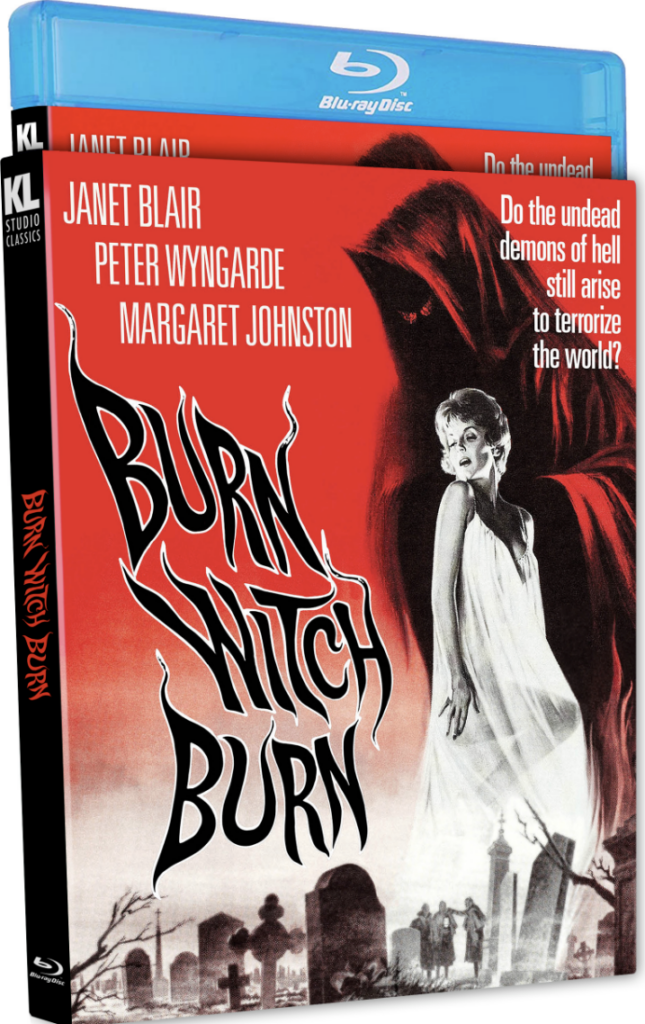Arrival of 1962’s ‘Burn Witch Burn’ on Blu-Ray Raises a Question: What Took So Long?
You’d think this-or-that social justice warrior would’ve already picked up on this prickly chiller, what with its skeptical take on Western rationalism and exposé of the abiding source for patriarchal power.

“Burn Witch Burn” (1962), also known as “Night of the Eagle,” is being proffered by Kino Lorber as a special edition Blu-ray, and it’s a wonder this hasn’t been done earlier.
You’d think this-or-that social justice warrior would’ve already picked up on this prickly chiller, what with its skeptical take on Western rationalism and exposé of the abiding source for patriarchal power. Participants in academic culture should’ve been on the ball given that director Sidney Hayers’s exegesis on professional one-upmanship tells us something about the lengths to which some folks will go for upticks in rank and status.
Actually, make that “one upwomanship”: “Burn Witch Burn” is based on Fritz Leiber’s 1943 novel of the supernatural, “Conjure Wife.” The book follows the exploits of a sociology professor at a small American college who comes to discover that his wife is a witch, and she’s not the only one. Screenwriters Richard Matheson, Charles Beaumont, and George Baxt change our protagonist’s field to psychology and the location to the United Kingdom. The picture was made under British auspices; seems fair.
The first time we see Norman Taylor (Peter Wyngarde), he’s lecturing on the limitations of superstition to a classroom of students at Hempnell Medical College. “I do not believe” is prominently scrawled on the blackboard, the four words “necessary to destroy the force of the supernatural, witchcraft, superstition, the psychic, etc. etc.” He’s adamant, our professor, and authoritative: He wields his chalk like a judge wields a cudgel. All the while, Taylor is mooned upon by a perky female student and glared at by her surly boyfriend.

A Friday night spent playing bridge with his colleagues and their wives ends well, even if a current of tension informs their leisure. Flora Carr (Margaret Johnston) is sending off bad vibes, don’t you think? She’s agitated because rumor has it that the recently hired Norman might leapfrog in position over husband Lindsay (a dithering Colin Gordon), an academic whose career at Hempnell is in something of a rut. How likely is that to occur? As the university secretary, Flora is more in the loop than most.
After the company takes their leave, Norman starts in on the requisite post-party precis, but wife Tansy (Janet Blair) is otherwise occupied. She’s running her fingers under tabletops, over bookshelves, and around the fringes of a standing lamp. Tansy is looking for something. Norman is oblivious to her quest — until he discovers a small, spider-like talisman in the apartment. It’s from their recent trip to Jamaica, a souvenir emblematic of obeah, a form of “conjure magic” employed by the African diaspora.
Norman eventually discovers a host of folk items stashed away in the couple’s picturesque British cottage — feathers, bones, figurines, and various charms. When he confronts Tansy with the evidence, she admits to using magic in order to sustain and promote Norman’s career. The good professor becomes apoplectic, lecturing his lovely wife on the fallacies of voodoo, hoodoo, or what-you-will. He strong-arms her into burning all of the otherworldly accoutrement in the fireplace. When a glossy photo of the happy couple inadvertently ends up in flames, the phone rings.
Norman picks up the phone and hears a voice, a woman’s voice. All we see are the speaker’s lips and the tips of her fingers trailing on the telephone cord. Soft seductions are whispered and the line goes dead.
The next morning Norman is hauled into an administrator’s office: He stands accused of raping the young woman in his class. Her boyfriend subsequently pulls a gun on him. The support offered by Norman’s peers and the administration is negligible bordering on contemptuous. On top of that, Tansy goes missing.
Academia, being an environment bubbling over with careerist envy, tends to be a good venue for both horror and humor — and don’t think there isn’t a satiric undercurrent to this modestly stated entertainment. Things go wild and things go spooky. When an effigy of the school mascot, an eagle, turns to flesh from stone, the results are genuinely unnerving.
Hayers had clearly studied “Citizen Kane” frame-by-frame and brought a suitably skewed sense of proportion and space to his compositions. That, and Flora makes for a memorable nemesis for which Johnston hams it up to joyous effect. Here is a minor miracle of commerce and a devil of a good time.

